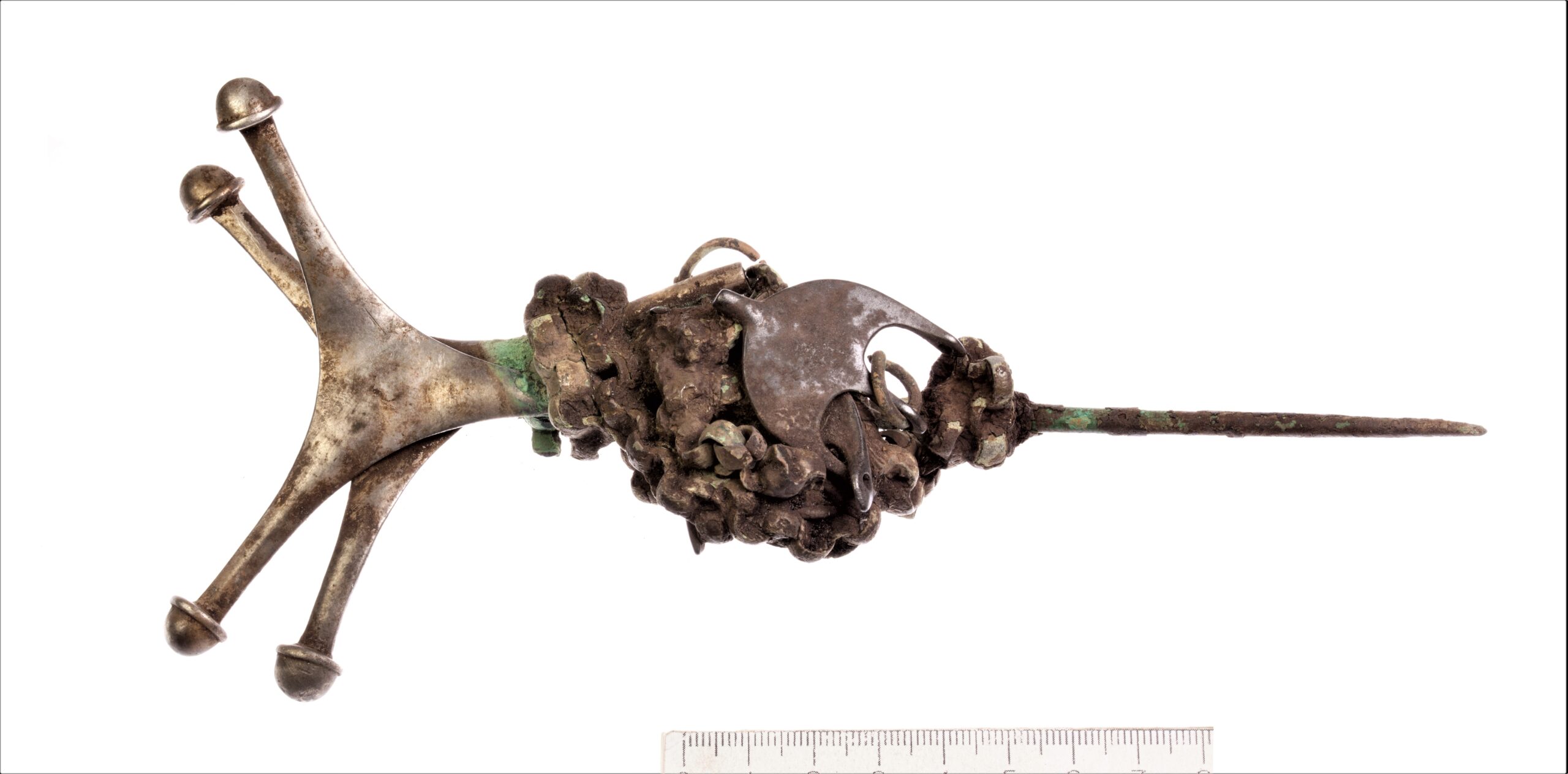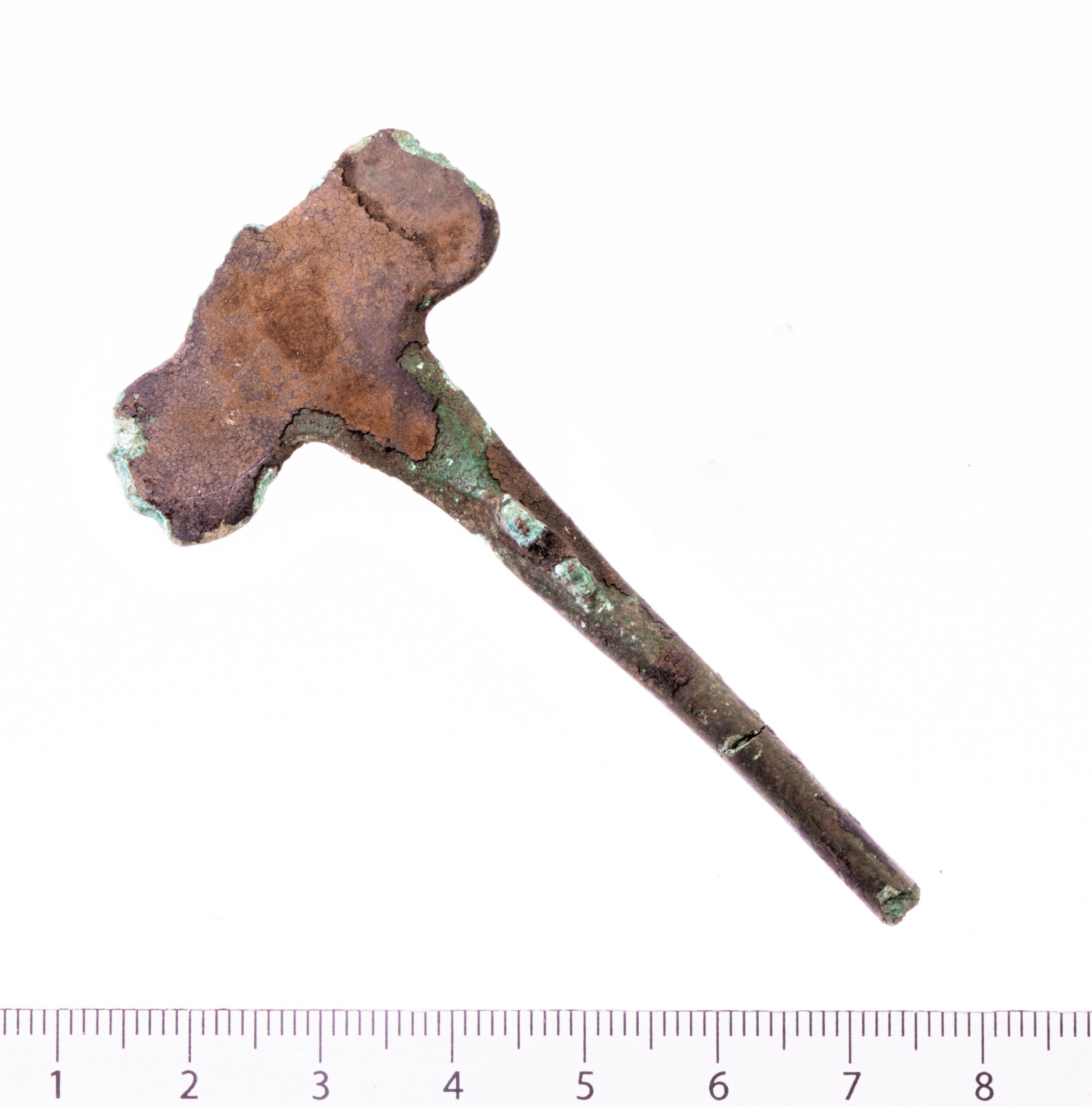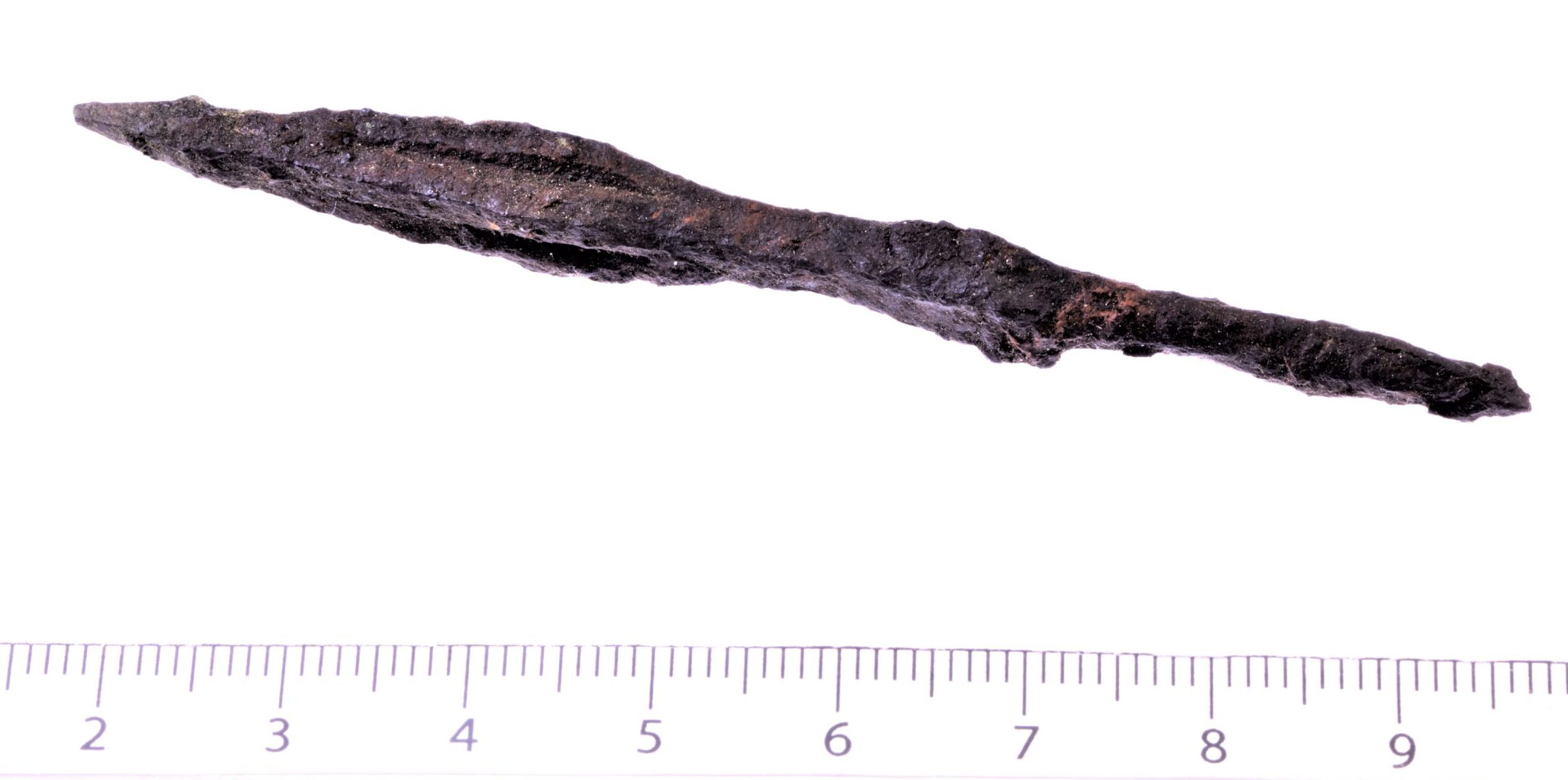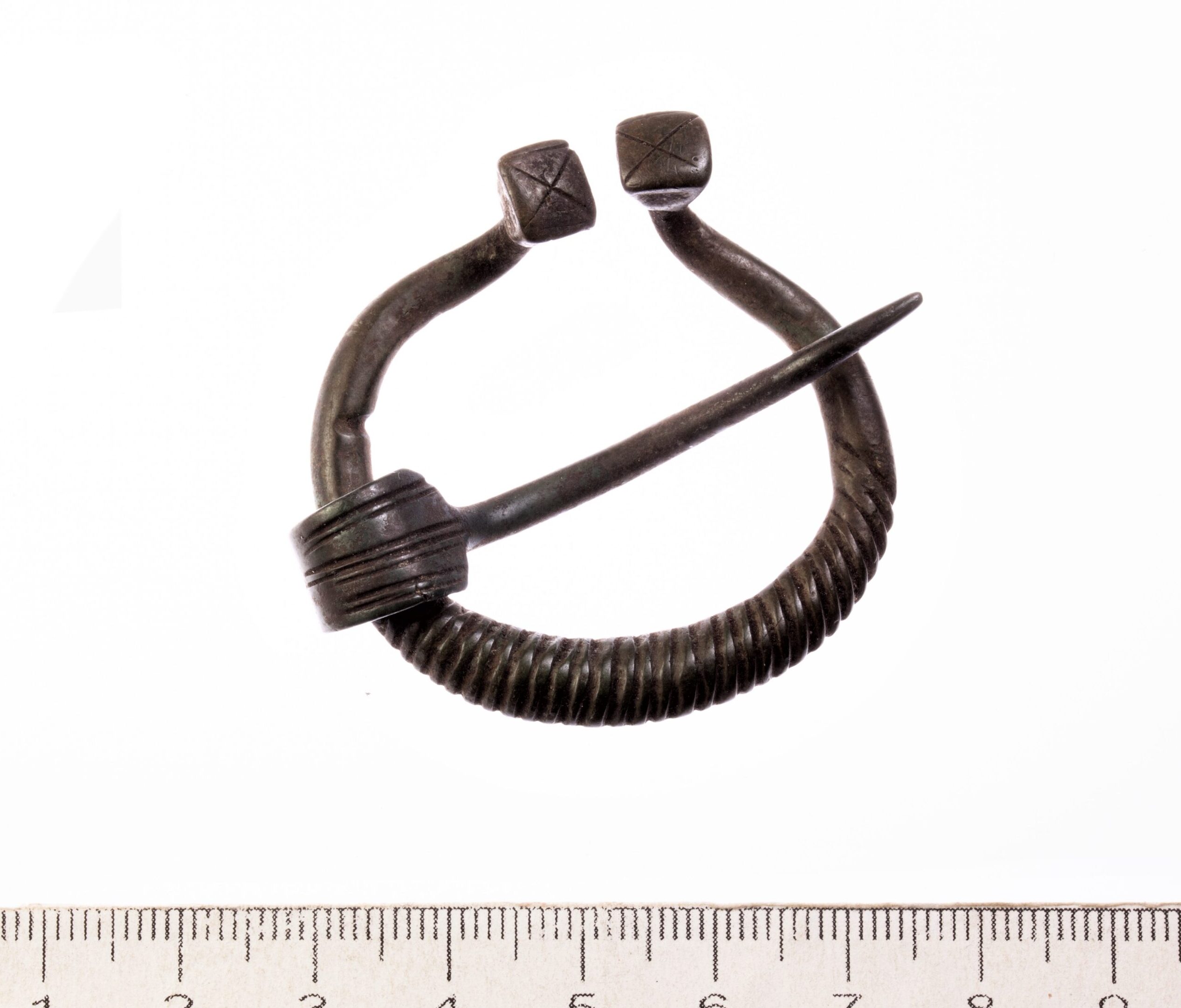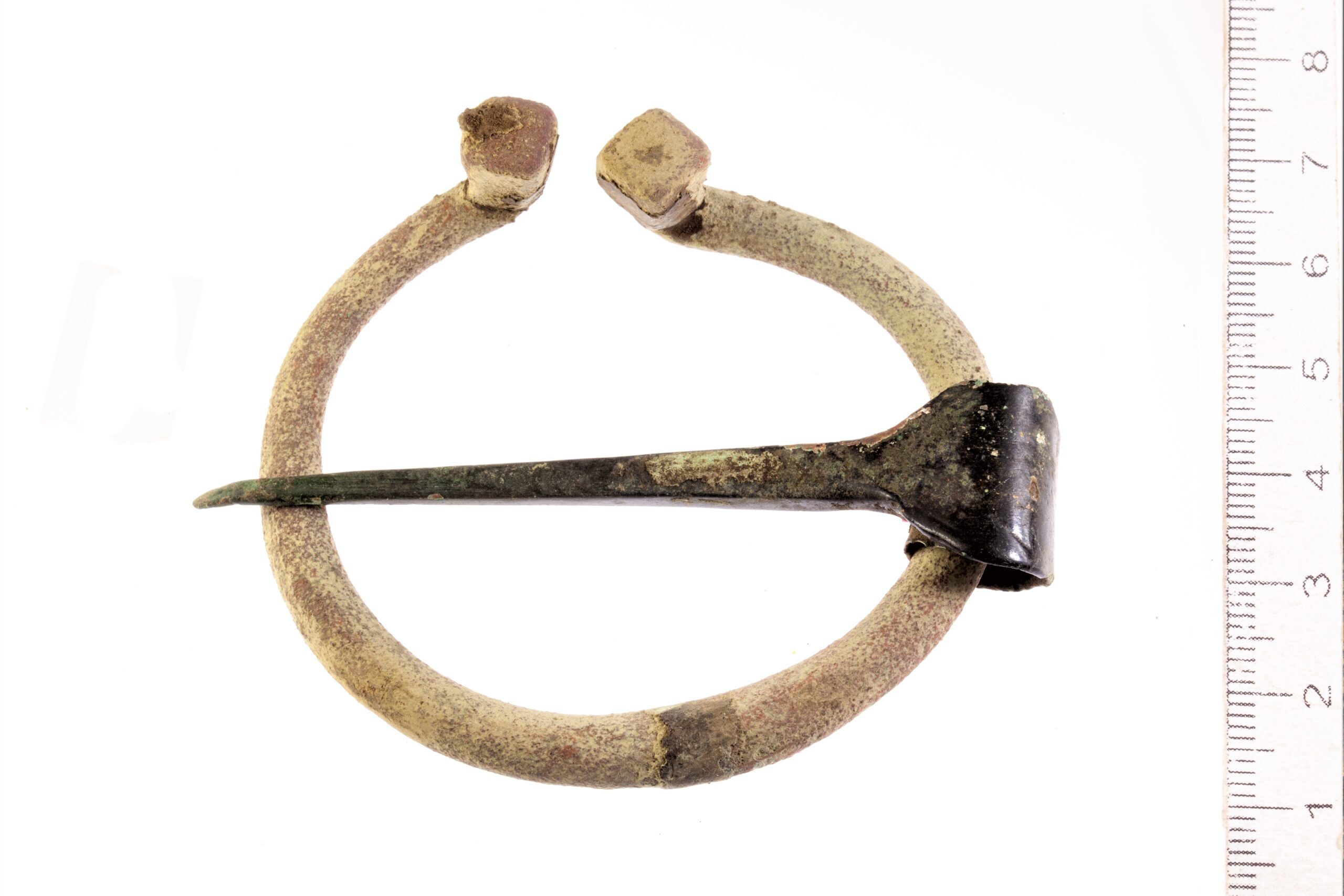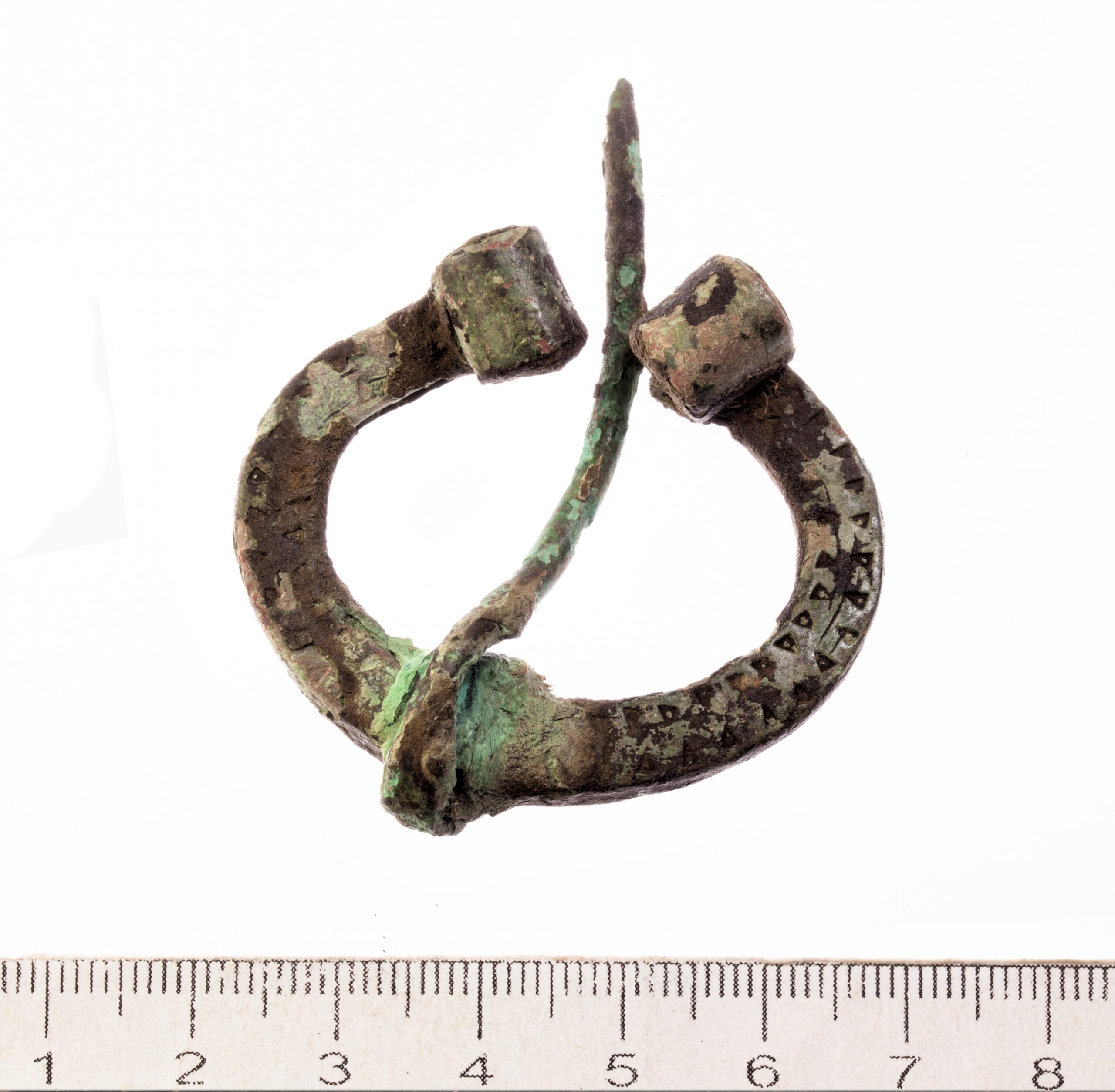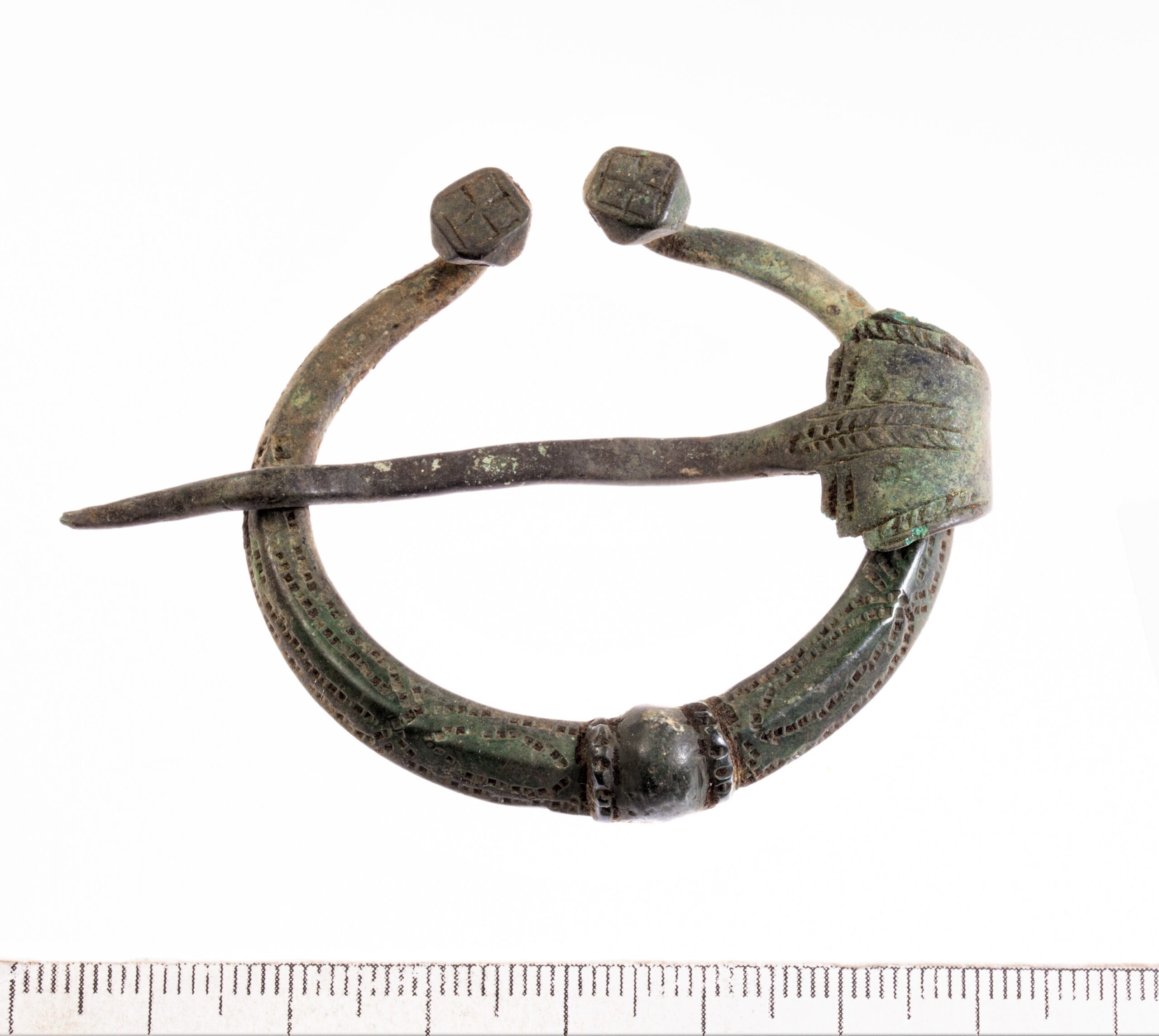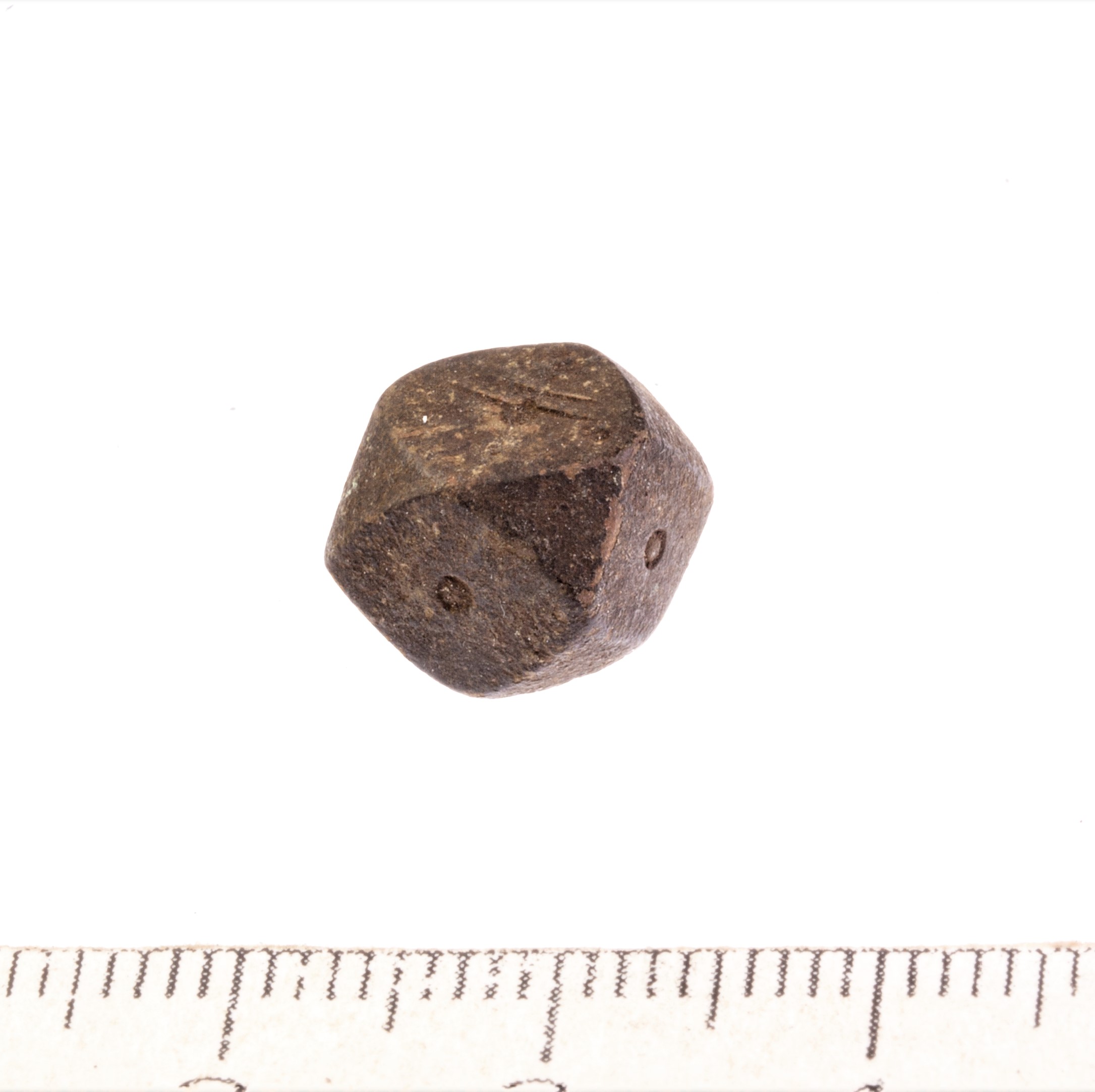Database
The Osiliana archaeological database brings together artefacts from Saaremaa and the surrounding small islands.
Most of Saaremaa’s archaeological finds are held in the collection of the Saaremaa Museum and in the Tallinn University Research Collection.
We are gradually adding more and more finds and hope that it will become a useful tool for all history and archaeology enthusiasts!
Mullutu
Bronze ring-headed dress pin. A similar pin was e g in Keila deposit find. The pin type was widespread in coastal Estonia, coastal Finland and coastal Latvia.
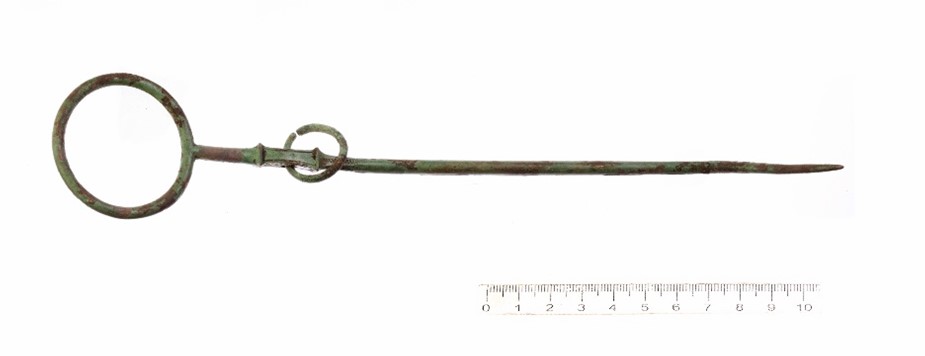


First photo: Jaana Ratas.
Ring-headed dress pin, bronze. A similar pin was e g in Keila deposit find. The pin type was widespread in coastal Estonia, coastal Finland and coastal Latvia.
Read more:
Mägi, M. (1997). Decorative pins of the merovingian and viking ages in Estonia: foreign and local. (EST: Eesti merovingi- ja viikingiaegsed rinnanõelad – võõrapärased ja omad.) Estonian Journal of Archaeology, 1, 26−83. Read the article (ENG p. 58-73): here.
Mullutu
Triangel-headed dress pins, 2, with two semi-oval chain holders and chain arrangement wrapped around the pins. The heads of the pins are made of silver and decorated with Animal-style ornament. mushroom-shaped knobs. Other parts of bronze.
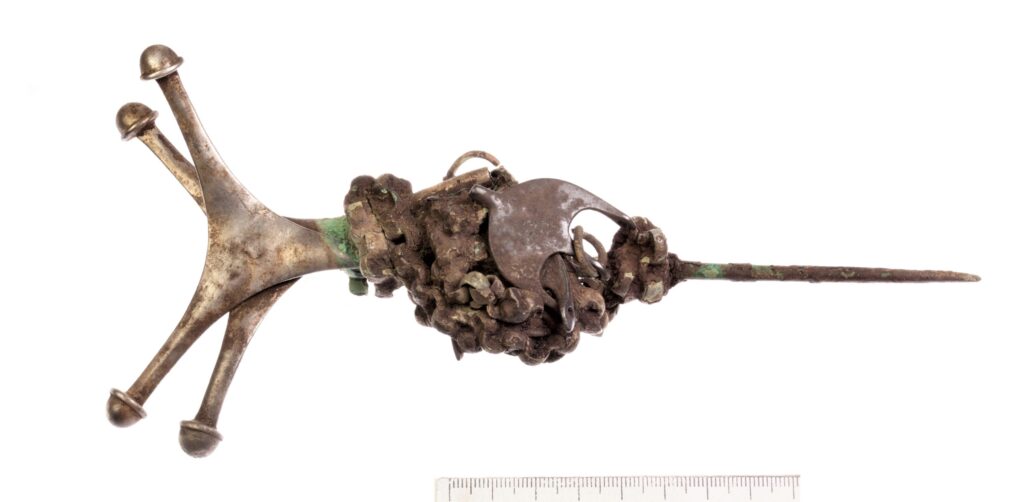
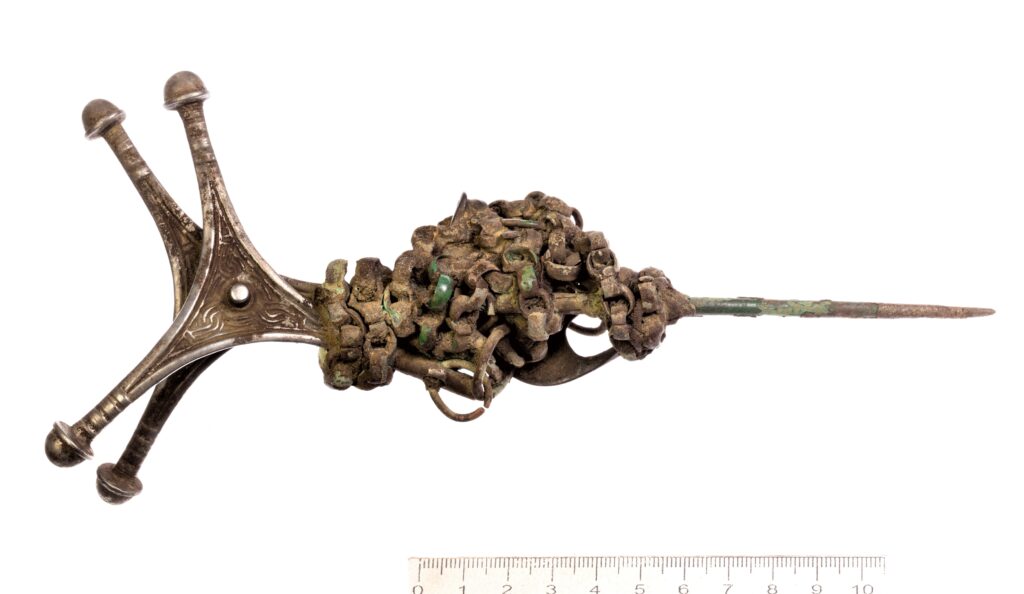
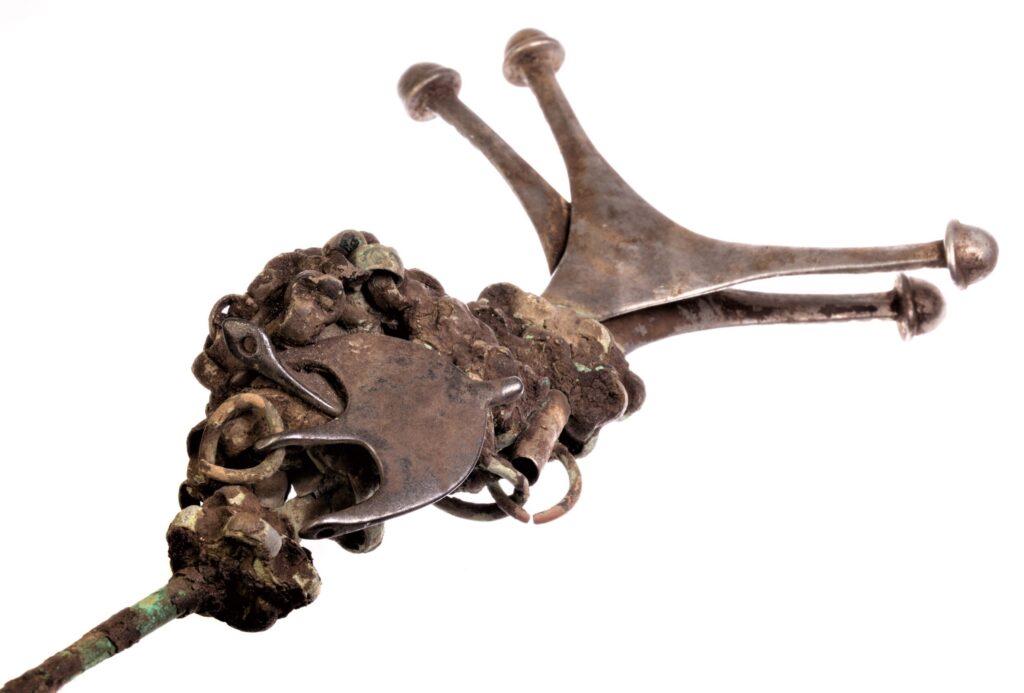
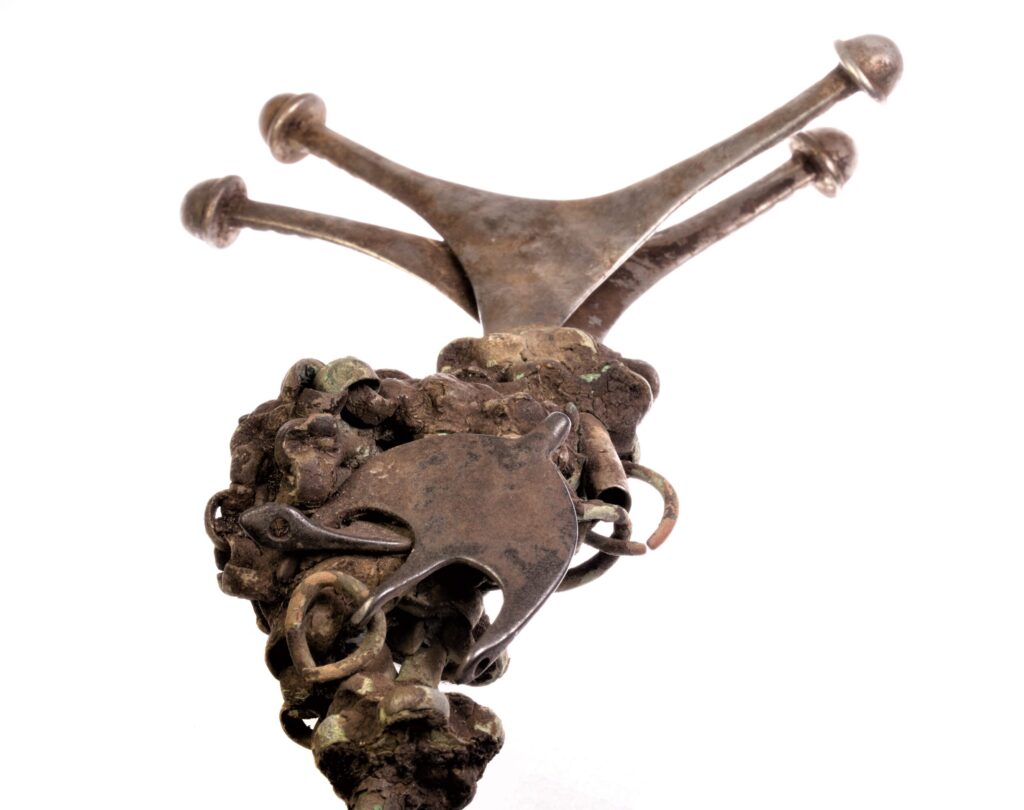
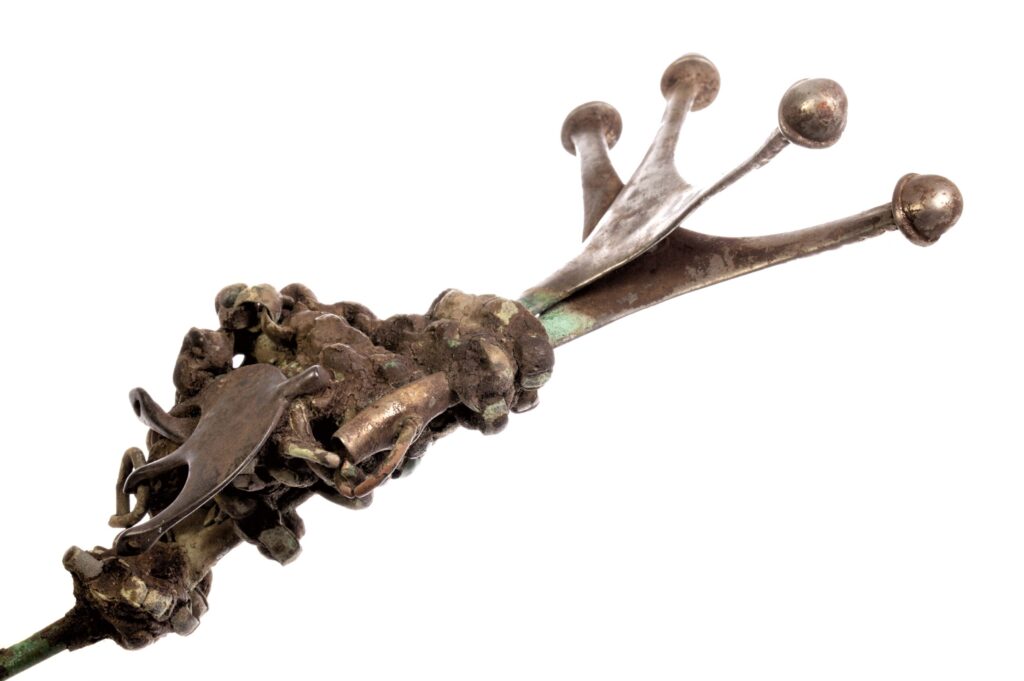
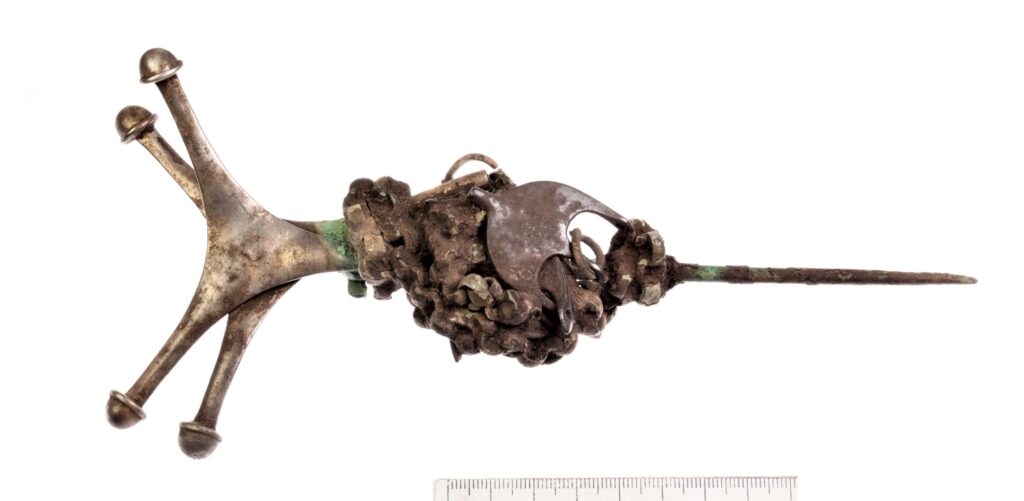
Photos: Jaana Ratas.
Triangel-headed dress pins, 2, with two semi-oval chain holders and chain arrangement wrapped around the pins. The heads of the pins are made of silver and decorated with Animal-style ornament. mushroom-shaped knobs. Other parts of bronze.
Read more:
Mägi, M. (1997). Decorative pins of the merovingian and viking ages in Estonia: foreign and local. (EST: Eesti merovingi- ja viikingiaegsed rinnanõelad – võõrapärased ja omad.) Estonian Journal of Archaeology, 1, 26−83. Read the article (ENG p. 58-73): here.
Jets, I., Mägi, M. (2015). Local shape, foreign decoration. Shared cultural values in dress pins from the Viidumäe sacrificial site on Saaremaa. Fornvännen. Journal of Swedish antiquarian research, 110 (4), 257−266. Read the article: here.
Mullutu
Fragment of a bronze ring-headed pin with a cross-shaped extension.
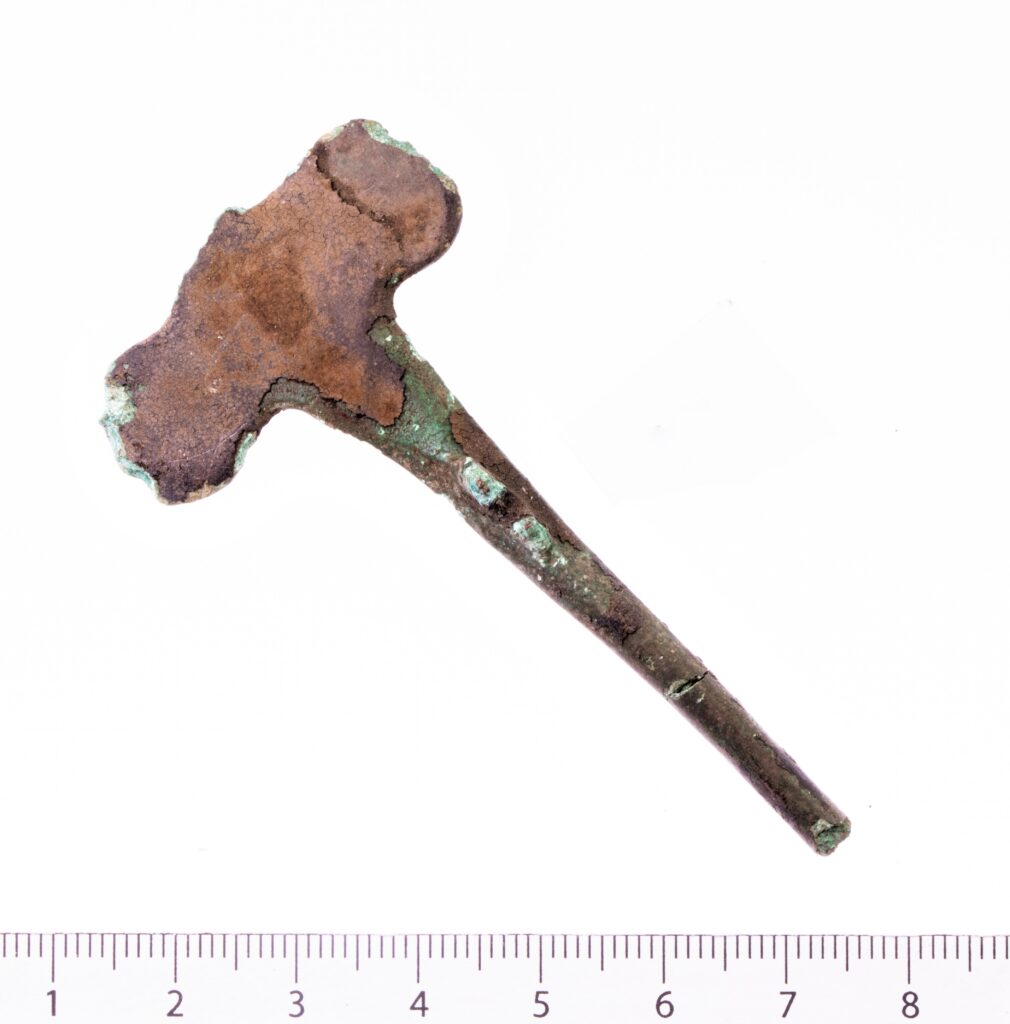
Photo: Jaana Ratas.
Fragment of a ring-headed pin with a cross-shaped extension, bronze.
Read more:
Mägi, M. (1997). Decorative pins of the merovingian and viking ages in Estonia: foreign and local. (EST: Eesti merovingi- ja viikingiaegsed rinnanõelad – võõrapärased ja omad.) Estonian Journal of Archaeology, 1, 26−83. Read the article (ENG p. 58-73): here.
Mullutu
Tanged arrow-head, iron. The blade cross-cut is shaped as a rhomb with four pointed ends, the cross-cut of the neck is rectangular. Analogues are known e g from Hedeby, Germany.
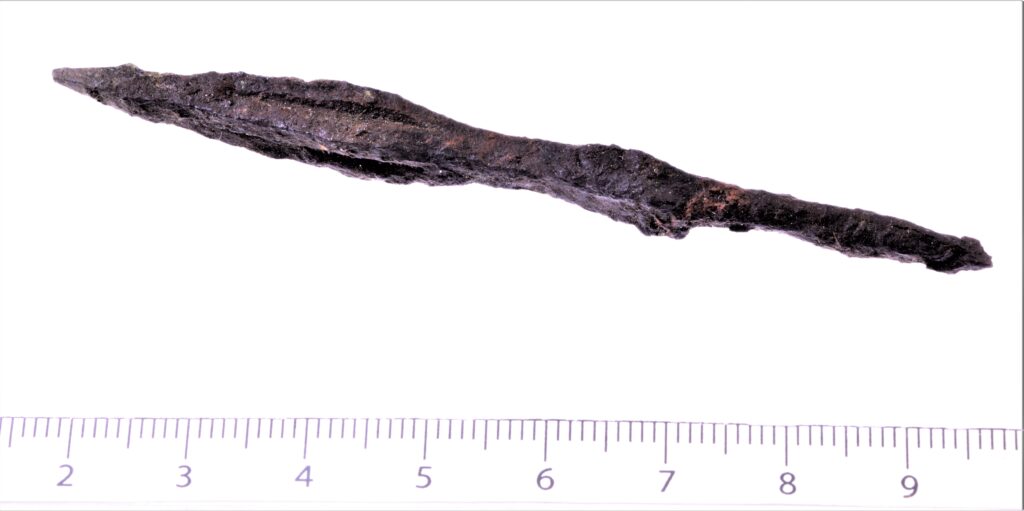 Photo: Jaana Ratas.
Photo: Jaana Ratas.
Tanged arrow-head, iron. The blade’s cross-cut is shaped as a rhomb with four pointed ends, the cross-cut of the neck is rectangular. Analogues are known e g from Hedeby, Germany.
Read more:
Schiezel, K. 2014. Spurensuche Haithabu. Dokumentation und Chronik 1963-2013. Schleswig, Wachholtz, 569.
Mullutu
Penannular brooch with irregularly funnel-shaped terminals, bronze. Similar ones have been found e g at Pöide and Valjala hill-forts, Karja and Valjala early Christian graveyards, and in the earliest layers of medieval Tallinn.

Photo: Jaana Ratas.
Penannular brooch with irregularly funnel-shaped terminals, bronze. Similar ones have been found e g at Pöide and Valjala hill-forts, Karja and Valjala early Christian graveyards, and in the earliest layers of medieval Tallinn.
Read more:
Mägi, M.; Malve, M. & Toome, T. (2019). Early Christian burials at Valjala churchyard, Saaremaa. Archaeological Fieldwork in Estonia, 2018, 93−118. Read the article: here.
Mullutu
Penannular brooch with irregularly funnel-shaped terminals, bronze.

Photo: Jaana Ratas.
Penannular brooch with irregularly funnel-shaped terminals, bronze.
Mullutu
Penannular brooch with rolled terminals and flat rectangular cross-section of the ring, bronze. Similar brooches have been found e.g. the Karja cemetery in Saaremaa. A similar one has been found in När, Gotland.
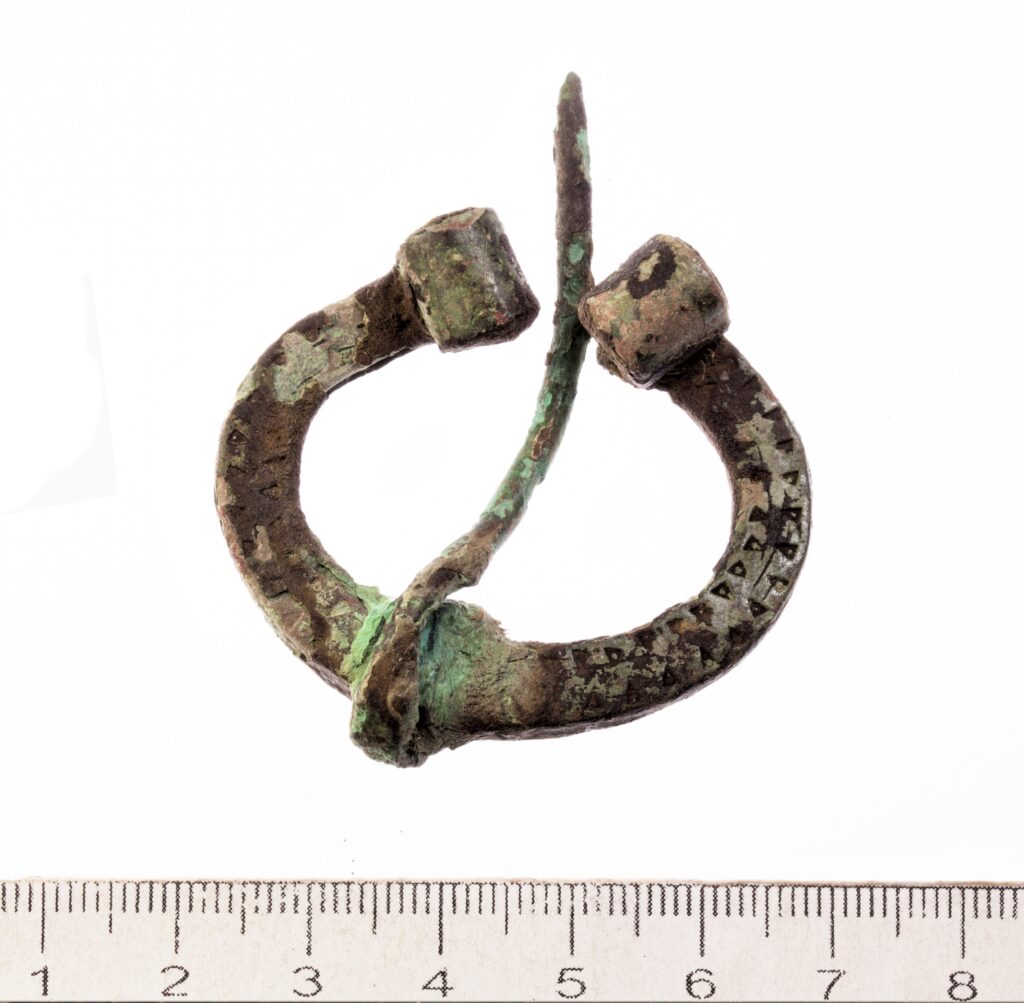
Photo: Jaana Ratas.
Penannular brooch with rolled terminals and flat rectangular cross-section of the ring, bronze. Similar brooches have been found e.g. the Karja cemetery in Saaremaa. A similar one has been found in När, Gotland.
Read more:
Mägi, M. (2002). At the Crossroads of Space and Time. Graves, Changing Society and Ideology on Saaremaa (Ösel), 9th–13th centuries AD. Tallinn: Ajaloo Instituut, Tallinn/Center of Baltic Studies, Gotland. Read the book: here. Look at the drawings of the archaeological excavations: here.
Thunmark-Nylén, L. 1998. Die Wikingerzeit Gotlands, II. Typentafeln. Stockholm.
Mullutu
Penannular brooch with small faceted terminals, bronze. From the end of the 12th century or from the 13th century.

Photo: Jaana Ratas.
Penannular brooch with small faceted terminals, bronze. From the end of the 12th century or from the 13th century.
Read more:
Pauts, H. (1997). Pahaga hoburaudsõled Eestis. (Töid ajaloo alalt, I.) Eesti Ajaloomuuseum, Tallinn, 79-115.
Mullutu
Octagonal weight of bronze. Facets decorated with “eyes”.
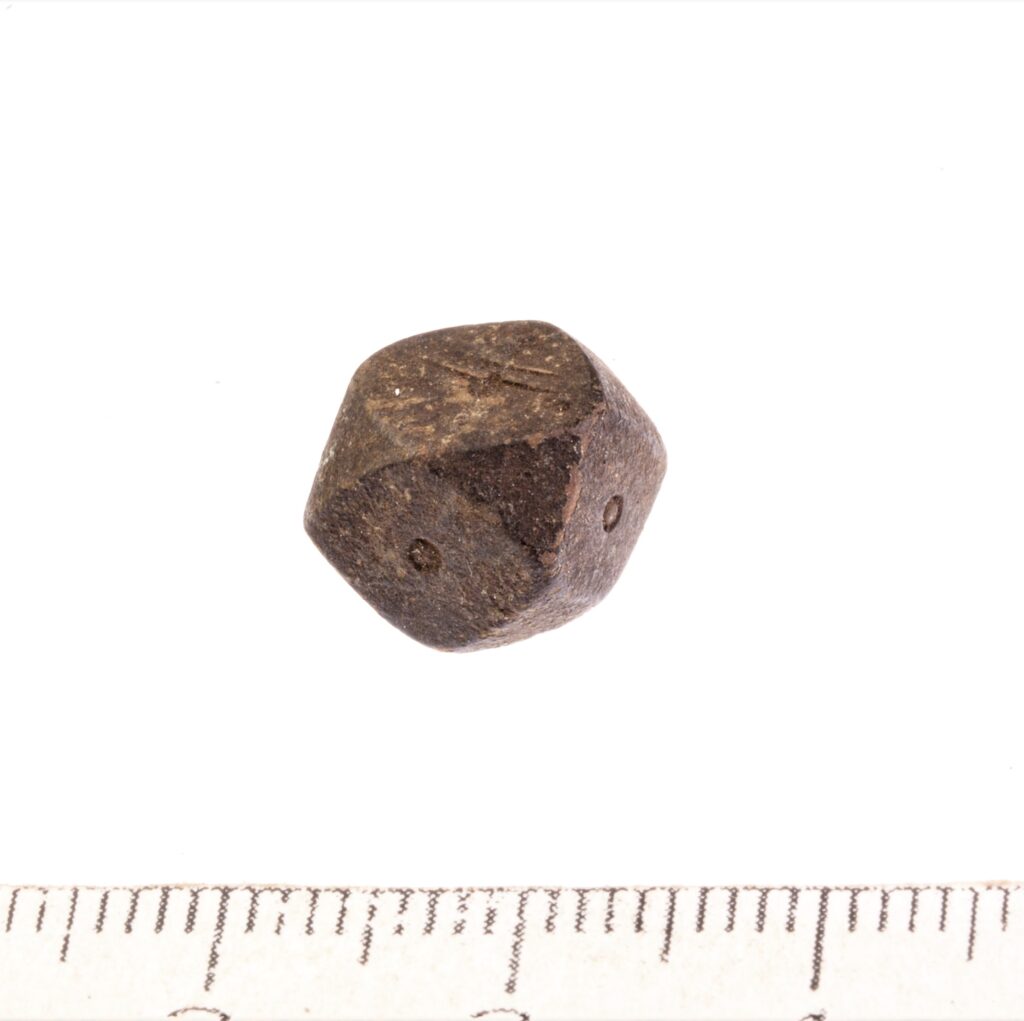
Photo: Jaana Ratas.
Octagonal weight of bronze. Facets decorated with “eyes”. Such weights can mainly be dated to 850-1000 AD.
Read more:
Gustin, I. 2004. Mellan gåva och marknad. Handel, tillit och materiell Kultur under vikingatid. – Lund Studies in Medieval Archaeology, 34. Malmö, Almqvist & Wiksell, 100-107.
The negative value refers to time Before Christ.

